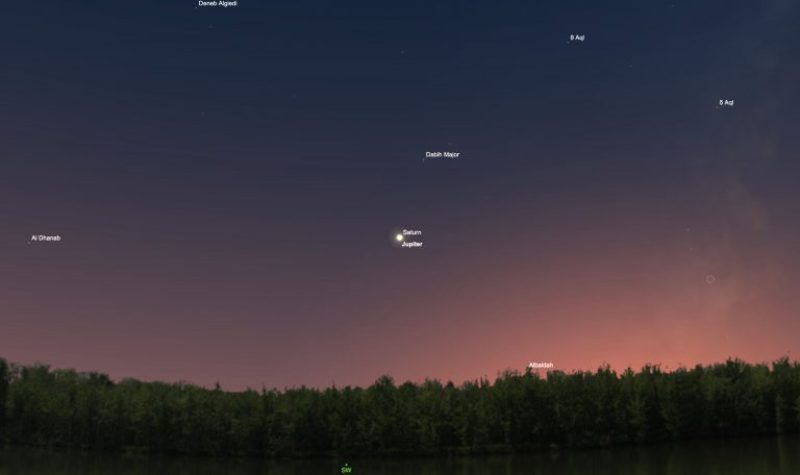On the winter solstice (Dec. 21), it is the shortest day of the year in the northern hemisphere and a memorable day for astronomers as the "The Great Conjuction" will take place tonight.
According to the National Aeronautics and Space Administration (NASA), the Great Conjunction is an incredible astronomical event that occurs every 20 years where Jupiter and Saturn come within 0.1 degrees of each other and will remain in close alignment for a few days. This means they will be they will be on the same "ecliptic longitude" but still 455 million miles apart.
The last conjunction happened on May 31, 2000 while the next occurrence is expected sometime in 2040. The conjunction is also known popularly as the "Christmas Star."
Nokhai Bhuttei, a University of Victoria student, is excited the year 2020 is ending with the sighting of the Christmas Star.
“It started like all other years, full of promise, but a few months in, threw so many challenges at us that tested our endurance levels to limits most never knew they had," Bhuttei told CFUV FM.
“However, I’d like to think the year is ending on a positive note for me especially since I have never seen the great conjunction, I’ve only read about it," he added.
“This means we will be seeing the Christmas Star right before Christmas and experts say the occurrence will light up the night sky, so yes I’m excited,” Bhuttei said.
NASA stated that the Great Conjunction will occur just after sunset on Dec. 21 and will be visible to the unaided eye for the first time in roughly 800 years.
NASA further explained that the 1623 Conjunction wasn't visible to sky gazers on much of the Earth because of its location in the night sky, so the last time the event was visible was in 1226.
For Africans like Bhuttei, who have never witnessed the occurrence live, he says the snow forecast today will not deter him as he will be out facing Southwest and looking out for the Christmas star.
Here is Bhuttei speaking with CFUV FM:


